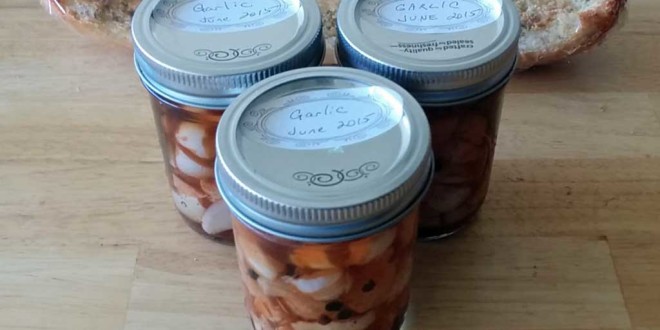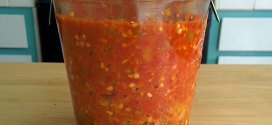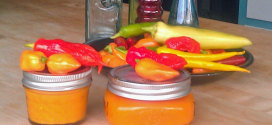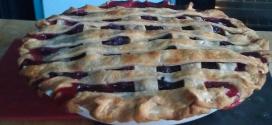I love growing elephant garlic. You stick a garlic clove in the ground in the fall (Sunnyvale USDA zone 9). In the spring, a tall stalk/scape shoots up. If you leave it alone, a large (5 inch wide) flower head appears. You can cut it off partway up the stalk and use the flower in a vase and the garlic will still grow. When the garlic scape withers and starts falling over, you dig up the clove head. Usually small, pea-sized, clove-lets develop on the sides of the head: Put those back in the ground for next year’s harvest. If you are like me then you have more than you can consume for months. So pickle them! Use the pickled garlic in antipasto or use them as you would use garlic.
Pickling is simple.
Ingredients
- Garlic cloves
- Vinegar (enough to cover the cloves)
- Spices and herbs (peppercorns, dill seeds, fennel, bay leaves, chile peppers, others)
- Pickling salt (1 tablespoon per couple of jars)
Prepare canning supplies
- Start boiling the water for the canning. Your typical canning pot holds 8 quarts with a wire rack for holding the jars. You need enough water to cover the jars
- Sterilize your jars: Place your glass jars in boiling water for several minutes and then remove them and let them cool
- Sterilize your jar rings
- Sterilize your jar seals
Instructions
Prepare a medium pot of ice cubes and water. Boil a second medium pot of water. Place the garlic cloves in the boiling water for 2 minutes. This has two purposes: The blanching helps separate the clove skin from the clove and it helps preserve the bright color of the garlic. Put the blanched cloves in the ice pot. Remove any peels. Optional: Cut into clove size pieces; remove undesired sections
Make a brine
The primary purpose of the brine is to create a hostile environment for undesired bacteria.
- Use vinegar. You can use any kind: white vinegar, apple cider vinegar, red wine vinegar, rice vinegar. Whatever you want. A reminder: they taste different.
- Add pickling salt. The difference between pickling salt and all other salts is that pickling salt does not make the pickling liquid cloudy.
- Add spices and dried herbs: peppercorns, dill seeds, fennel, bay leaves, others
- Add salt
Put garlic, peppers, and bay leaves in jars
Cover with brine
Pour brine into jar up to one-half inch of top. Don’t overfill. The air space is required for effective vacuum sealing. If you overfill, you risk failing to seal the jar. If you under-fill, you expose some of the garlic to air which can shorten the preservation. If your jar fails to seal, you can either repeat the whole process or you can just store the jar in the refrigerator.
Boil the jars for the required time.
Under 10,000 feet elevation, boil for 10 minutes
Refrigerate after opening







